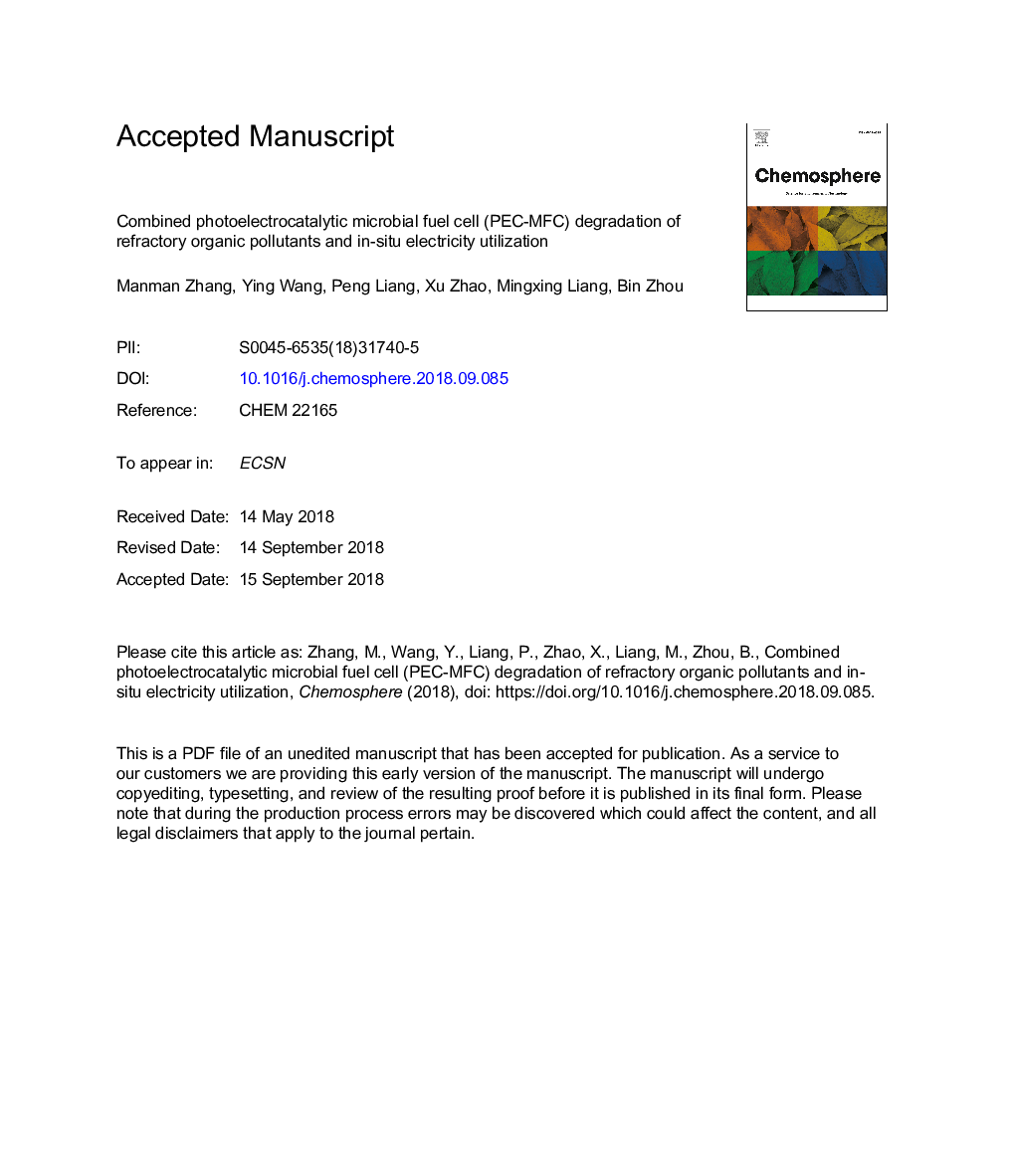| Article ID | Journal | Published Year | Pages | File Type |
|---|---|---|---|---|
| 11025192 | Chemosphere | 2019 | 38 Pages |
Abstract
A new photoelectrocatalytic (PEC) and microbial fuel cell (MFC) process was developed and applied to simultaneously remove refractory organic pollutants (i.e., phenol and aniline) from wastewater while recovering energy for in-situ utilization. The current generated by the MFC process was applied to drive the PEC reaction. Compared with single PEC or MFC processes, the PEC-MFC combined process showed higher pollutant and chemical oxygen demand (COD) removal capacities and electricity production. Over 95% of the phenol or aniline was removed by these process, even at high initial concentrations. The COD removal efficiencies for phenol and aniline were ca. 96% (from 700 to 29â¯mgâ¯Lâ1) and 70% (from 165 to 49â¯mgâ¯Lâ1), respectively. Although the PEC process showed a limited contribution to phenol and aniline removals (16.5% and 43%, respectively), the utilization of PEC-treated phenol or aniline streams resulted in a MFC with higher voltage output, higher coulombic efficiency, maximal volumetric power density, and lower internal resistance as compared to untreated water. High-performance liquid chromatography coupled with mass spectrometry measurements revealed quinones/hydroquinones and low molecular weight organic acids to be produced as intermediates after the PEC process, which could improve the production of electricity in the MFC.
Related Topics
Life Sciences
Environmental Science
Environmental Chemistry
Authors
Manman Zhang, Ying Wang, Peng Liang, Xu Zhao, Mingxing Liang, Bin Zhou,
